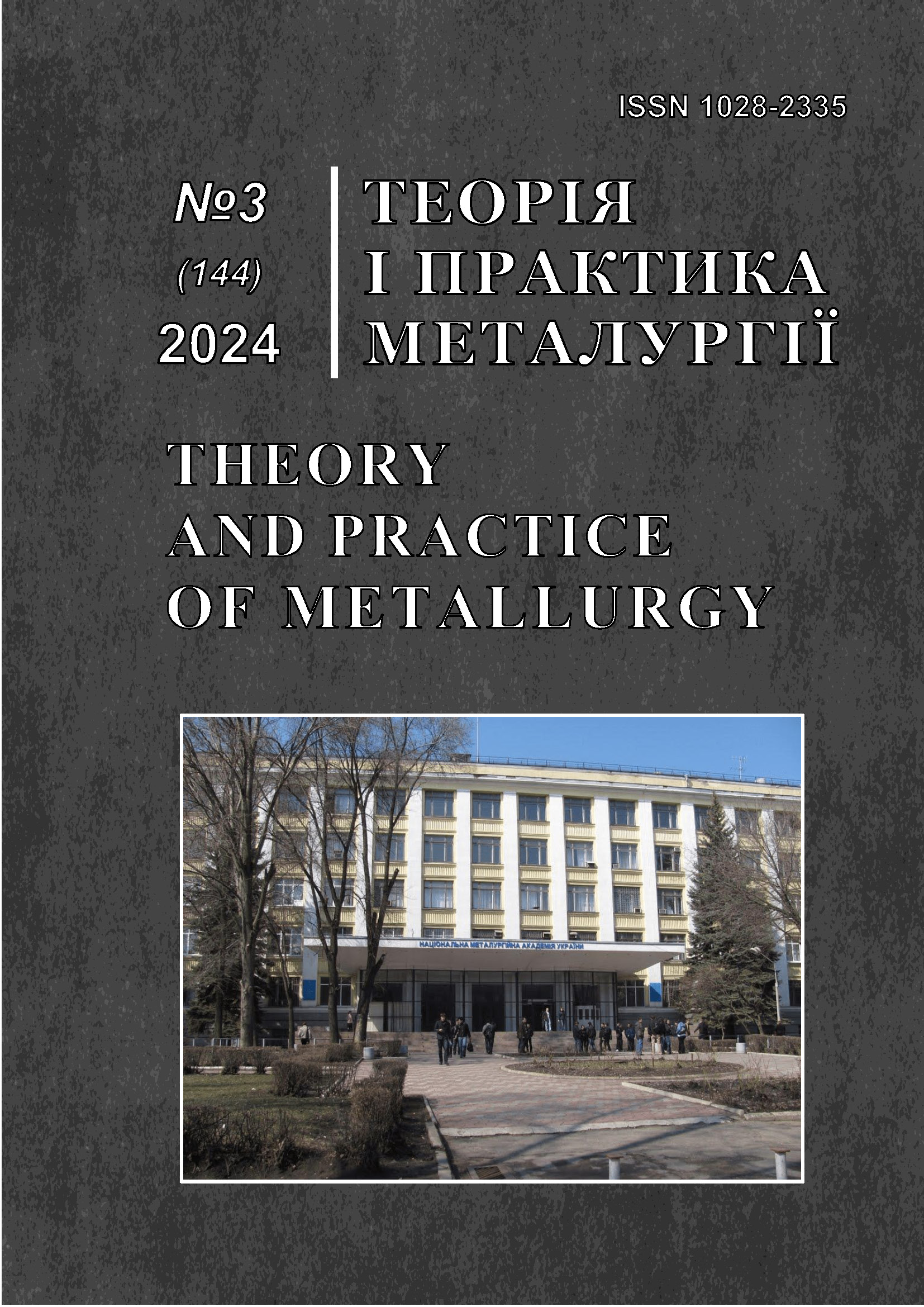Improvement of the temperature and speed regime of casting rail steel ingots
DOI:
https://doi.org/10.15802/tpm.3.2024.13Keywords:
steel casting, temperature and speed conditions, rail steel, ingot defects, uphill casting, optimizationAbstract
Purpose. To study the temperature and speed regime of rail steel casting in order to reduce ingot defects, such as cracks, non-metallic inclusions and shrinkage, and to improve the quality of metal products. Methodology. Analytical and experimental approaches were used to determine the effect of casting temperature and mould filling rate on the quality of killed steel ingots. Defects were analyzed and a mathematical model was developed to optimize casting parameters. The study was carried out on steel grades K63, PT70sp and 70G, which were cast by uphill casting into ingots weighing 7 tonnes. Findings. The optimal values of the temperature-rate parameter were established for each steel grade under study, which allowed reducing the number of rejects by 57.45%. The results confirm that compliance with the optimal ratio of the temperature of steel overheating above liquidus and the casting speed minimizes the formation of cracks and films. The calculated values of the casting speed and ingot filling time are presented in the form of graphical dependencies. Originality. For the first time, a comprehensive analysis of the dependence of rail steel ingot quality on the parameters of the temperature and speed regime of casting, taking into account the steel grade, was carried out. An optimisation parameter has been proposed and a methodology for determining the optimal temperature and speed regime of steel ingot casting by the uphill casting method based on the approximation of experimental data has been developed. Practical value. The results of the study make it possible to improve the quality of rail steel ingots by reducing the number of defects, which contributes to resource savings and improved performance properties of metal products. The proposed recommendations can be used at metallurgical enterprises to improve steel casting technology.
References
Bernstein, M. L. (Ed.). (1979). Atlas of defects.
Yavoysky, V. I., Levin, S. L., Baptizmansky, V. I., Umrikhin, P. V., Medzhibozky, M. Y., Povolotsky, D. Y., Oakes, G. M., Chernenko, M. A., Abrosimov, V. (1973)
Efimov, V. A. (1976). Steel casting and crystallisation
Ruban, V., Stoianov, O., Niziaiev, K., Synehin, Y., Zhuravlova, S., & Malii, K. (2023). Investigating cavity formation in an electric arc zone during out-of-furnace processing of steel. Eastern-European Journal of Enterprise Technologies,4(1), 134–142. https://doi.org/10.15587/1729-4061.2023.284884
Problems of steel ingot. (1969), (3)
Efimov, V. A. (1961). Steel ingot. Metallurgizdat
Baptizmansky, V. I., Velichko, A. G., & Isaev, E. I. (1988). Out-of-furnace treatment of steel. UMK VO
Downloads
Published
How to Cite
Issue
Section
License
Copyright (c) 2024 Niziaiev K.H., Synehin Ye.V., Stoianov O.M., Zhuravlova S.V., Zhuravlova I.V., Ostrianin R.Ye., Skripnik A.V.

This work is licensed under a Creative Commons Attribution 4.0 International License.
Authors retain copyright of the published papers and grant to the publisher the non-exclusive right to publish the article, to be cited as its original publisher in case of reuse, and to distribute it in all forms and media. Articles will be distributed under the Creative Commons Attribution 4.0 International (CC BY 4.0) licence.
Authors can enter the separate, additional contractual arrangements for non-exclusive distribution of the published paper (e.g., post it to an institutional repository or publish it in a book), with an acknowledgement of its initial publication in this journal.




